When I was a kid growing up North of Seattle, my dad would take us downtown to Recreational Equipment, Inc. (REI). This was in the 1970’s, and REI was nothing more than a store in a dank basement with outdoor wear stacked in piles on folding tables. I remember an overhead water pipe leaking on a down jacket in the middle of the table, and nobody much cared.
The character of the place was simply a reflection of the rugged Pacific Northwest.
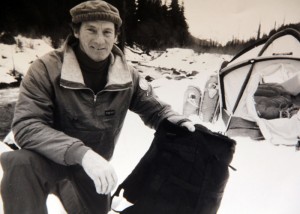
Legendary Mountaineer, Lou Whittaker
Then my dad pointed out Lou Whittaker, a legendary mountain climber and founder of Rainier Mountaineering. Whittaker led the first American ascent of the North Col of Mount Everest in 1984. The guy was just hanging with his REI pals in this dark and musty store talking about their next exploits, I assumed.
I loved the place.
It’s been over 40 years, and REI has grown to become the mega outdoor retailer you know today. So I was impressed the moment I saw REI’s new #OptOutside campaign. It felt as authentic to me now as that first store did back in the day.
REI’s #OptOutside campaign encourages consumers to opt-out of the madness of Black Friday shopping the day after Thanksgiving and do something, anything, in the great outdoors.
The campaign spoke to me as a brand truly living its story and encouraging others to join the journey.
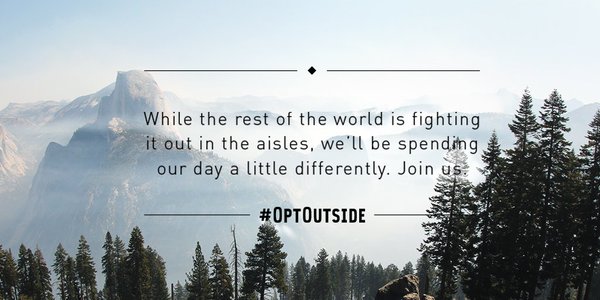
I wondered how this brilliant example of brand storytelling came to life? This article in Adweek said specialists from REI’s agencies, including Venable Bell & Partners, Edelman and Spark created #OptOutside. Or you can listen to the creative director behind the work, Lee Einhorn, on the Business of Story podcast describe the genesis of the campaign.
Then I wondered how a brand without those kinds of resources could create a similarly powerful movement? So I ran the #OptOutside campaign through the Story Cycle process to demonstrate how it’s always about the story. And when you approach your campaigns using an intentional and pragmatic method like the 10-step Story Cycle process, you can create movements that move mountains.
Let’s take a look at the #OptOutside campaign (I actually think it’s more of a movement) through the lens of the Story Cycle.
1. Backstory
Like all great stories, you have to establish the setting for your initiative, campaign or movement. The setting for REI’s #OptOutside campaign is inviting consumers to participate in an outdoor story set in contrast to the maniacal binge shopping of Black Friday.
“Only in America do people trample others for sales exactly one day after being thankful for what they already have,” someone once said. Black Friday purportedly gets its name from retailers who operate in the “red” all year long until the traditional beginning of the Holiday shopping season the day after Thanksgiving.
If any shopping day takes advantage of the Fear of Missing Out (FOMO) addiction, it’s Black Friday and the fear of missing deals. But instead of automatically opting-in to the wilderness of sales-galore shopping malls, REI is challenging us to #OptOutside and find ourselves in the great outdoors.
In a statement from Jerry Stritzke, president and CEO of REI, he said…
“We think Black Friday has gotten out of hand and so we are choosing to invest in helping people get outside with loved ones his holiday season, over spending it in the aisles. Please join us and inspire us with your experiences. We hope to engage millions of Americans and galvanize the outdoor community to get outside.”
2. Hero
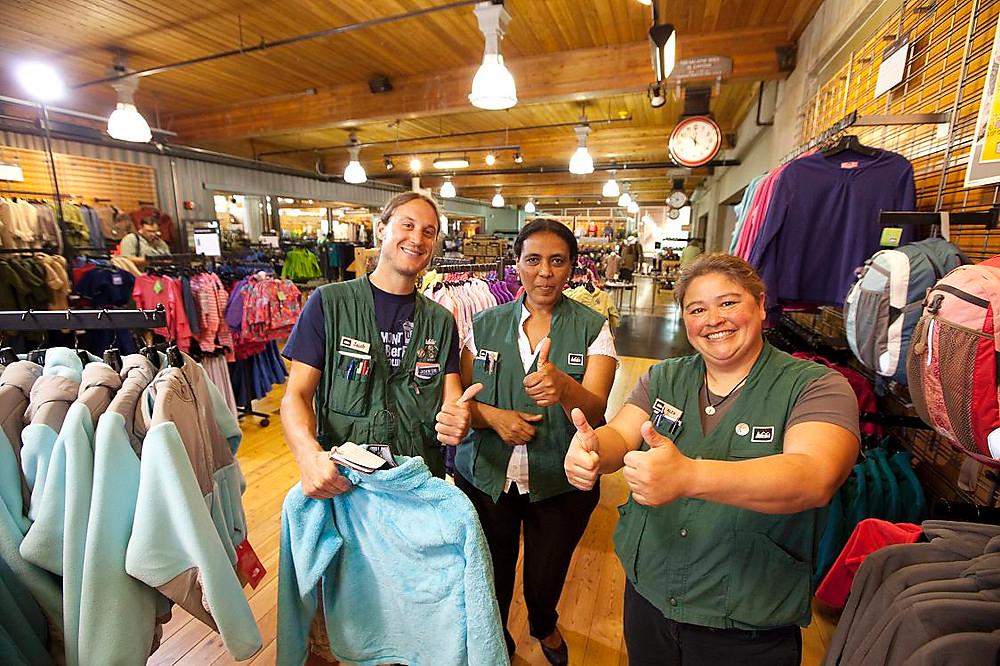
Despite what you might think, REI is not the hero of this story. The #OptOutside story centers on REI’s 12,000 employees, and by extension, its customers and shareholders. Most customers are members of the REI co-op. A fourth audience includes all of those consumers who don’t shop at REI, but now have a new meaningful story through which to view the retailer and what it stands for.
3. Stakes
In its bold proclamation to #OptOutside instead of shop, much like Patagonia’s “Don’t Buy This Jacket” campaign in 2011, REI is building employee and customer engagement by expressly living its values of consuming experiences over stuff.
What’s at stake for the employees is a bonus paid day off during the Holidays to spend with their friends and family, and to work for a company that demonstrates its ethos of getting people outdoors. Customers and shareholders associate with the goodwill created by the movement that will hopefully lead to more brand bonding and, not so ironically, sales.
4. Disruption
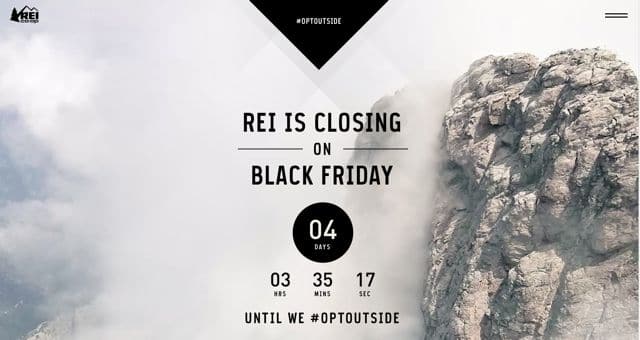
It’s impossible to sell into the status quo. A brand must be disruptive. So REI opted to disrupt Black Friday. The #OptOutside campaign has a call to adventure baked in. Hollywood calls this an “inciting incident.” If you don’t have a disruptive inciting incident, you have no story.
REI’s disruption here is to encourage us to not lose ourselves in the artificial consumer constructs of Black Friday, but instead to find ourselves in nature.
Adweek noted, “At its core is the decision to close all 143 retail locations, headquarters and two distribution centers on Nov. 27—an implicit attack on rampant consumerism at the expense of nature and the experience of the outdoors.”
Bam, REI triggered the story, and they want all of us at the center of it.
5. Antagonists
This is where the brand’s authors must overcome the obstacles and antagonists that stand in the way of success. In the Story Cycle, we call this chapter “Villains, Fog and Crevasses.” Who is out to thwart your progress? Where are your blind spots? And what gaps do you have to bridge to be successful?
Operationally, I don’t know what REI had to overcome to make the #OptOutside movement happen. I bet, though, they have a communications plan in play to address the cynics and critics who will call this just another cheap stunt to drive more sales for the $2.3 billion per year retailer.
Look, REI is in business to turn a profit. But they have chosen to put their money where their granola bars usually go. They have authored a lead-by-example brand story that the company will have to live into. They can’t do it half-ass, or REI will lose considerable credibility and the very goodwill they’re after.
6. Mentor
Most brands that create a stirring movement like #OptOutside would consider themselves the hero of this journey (Even brands without this vision think they’re the hero of the story). However, like I pointed out in step 2 in the Story Cycle system, REI is the mentor in service to the true heroes of the journey: It’s employees, customers, shareholders and prospects.
From its #OptOutside website:
“REI believes that being outside makes our lives better. That’s why this Black Friday, we’re closing all 143 of our stores and paying our employees to head outside.”
REI mentors us by first conjuring up the #OptOutside movement and calling us to reframe how we spend our Thanksgiving holiday. They shut down their stores and website for Black Friday, and then equip us with online tools and trail guides to Sherpa us to our outdoor adventures.
7. Journey
Now that we’ve established the backstory, who’s the hero, what’s at stake, the call to adventure, the villains, fog and crevasses, and the mentor, the real fun begins. In the Story Cycle, this is called “The Road of Trials.” It’s where the hiking boot hits the trail for REI’s #OptOutside movement with the campaign elements that create engagement.
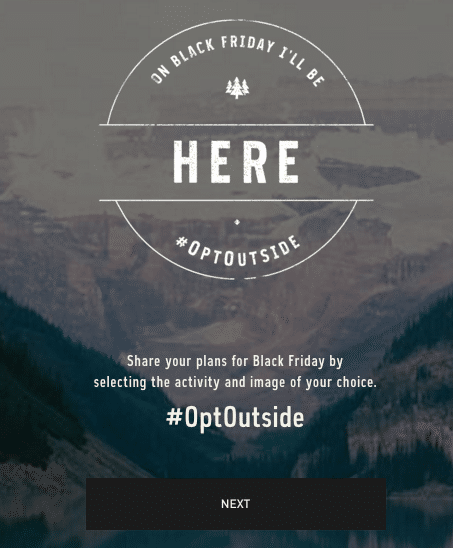
The #OptOutside campaign elements include:
- The #OptOutside campaign theme that is the call to adventure
- The optoutside.rei.com micro-site that invites everyone to get involved by committing to an adventure, sharing your photos, telling the world and exploring the #OptOutside photo gallery
- On Black Friday, REI.com will feature a black takeover screen encouraging visitors to #OptOutside
- An Instagram campaign that, as of this writing, has nearly 50,000 posts
- The ubiquitous #OptOutside Twitter campaign
- A geo-targeted Facebook campaign that locates the four or five trailheads nearest your location
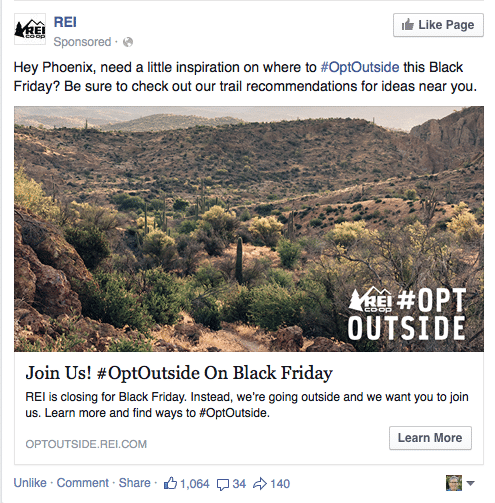
For a deeper dive into the social campaign that makes up the #OptOutside journey, checkout this excellent overview on marketingland.com
8. Victory
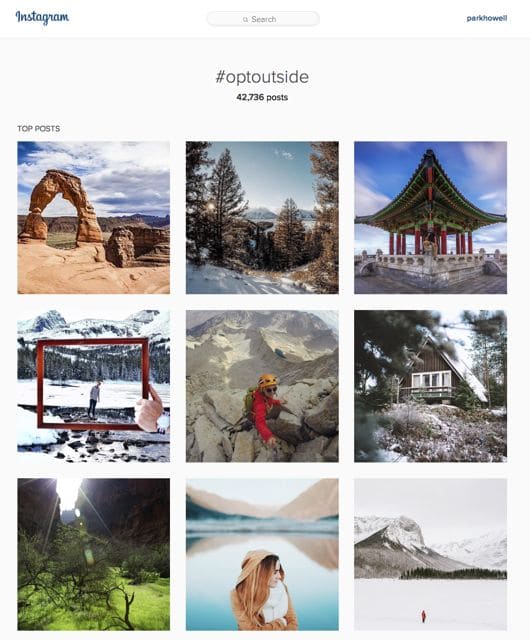
I like that REI’s brand story is not only participatory, but that the company helps you celebrate your success along your journey through social sharing. Each shared adventure proclamation and photo provides a moment of accomplishment for the individual and are mile-markers for the overall success of the movement.
All great movements must demonstrate ongoing progress – victories large and small – and #OptOutside wrangles this beautifully by making its call to action a social media construct played out in online sharing environments where they create community around the individual adventures.
9. Moral
Whether explicit or implied, all stories have a moral: a meaning or truth that we derive from the telling. Brand stories have a moral to them as well. It is within these stories where brands connect their shared values with their employees, customers and shareholders.
To me, REI’s “OptOutside movement expresses the company’s commitment to its employees, its values of enjoying the simpler things in life and celebrating the great outdoors. Plus, the inclusive nature of the #OptOutside call to adventure is in the spirit of its member-owned cooperative.
10. Ritual
The power of great brand stories that employees and customers can live into is the bond they create between the audiences and the organization. Brand rituals arise from this kind of connection. Already, many organizations are joining the #OptOutside journey. State Parks are offering free admittance on Black Friday. Will this become a ritual for free park access on all future Black Fridays?
Here are 62 ways you can opt for the great outdoors.
Will REI “own” consumer mindshare on Black Friday from here on out with its #OptOutside campaign? I can’t imagine REI doing this for a few years and then abandoning the campaign (See chapter 4 about antagonists above). No, that kayak has left the dock. I believe this must be a legacy program for REI.
Obviosuly, if #OptOutside can gain traction spurring people to opt for outdoor adventures more often, then REI stands to gain more customers and increase those wonderfully ritual expeditions into one of its retail stores, or exploring its website before your next adventure.
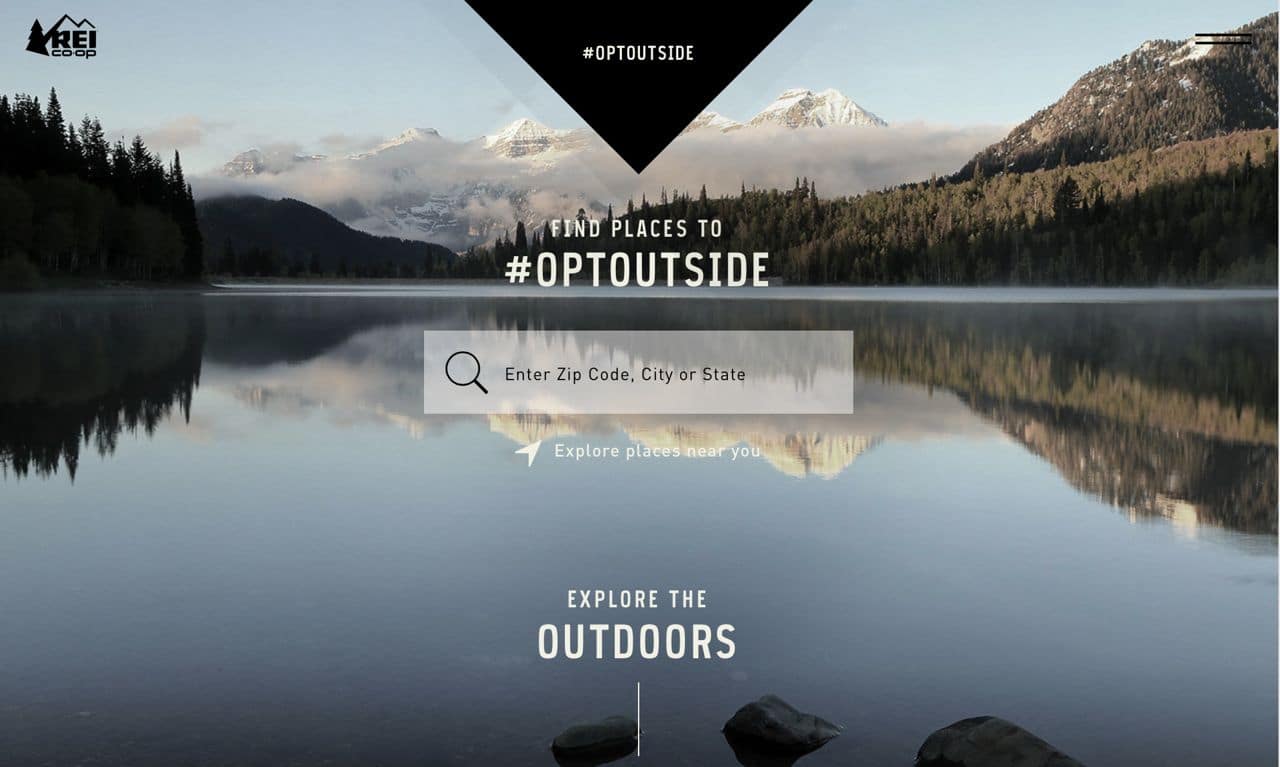
Let’s take a quick review of how REI’s #OptOutside campaign follows the Story Cycle structure, and imagine how you can use this process for your next initiative or movement.
- Backstory: Turn Black Friday into a glorious outdoor outing
- Heroes: Employees, customers, shareholders and prospects
- Stakes: Finding oneself bonding with nature and REI
- Disruption: Appreciate the value of spending time outdoors instead of losing yourself in the consumer wilderness of Black Friday
- Antagonists: Movement cynics
- Mentor: REI, who equips you mentally and physically to find yourself outdoors
- Journey: The online tools and community to Sherpa participants to their next outdoor adventure
- Victory: Social sharing that encourages and celebrates individual quests
- Moral: The spiritual reward of opting-in to the great out-of-doors
- Ritual: Begin your next adventure at REI
REI started from humble beginnings. I know, I was there as a kid marveling at that musty collection of outdoor garments, equipment and enthusiasts in their first store. I think they are where they are today because they have remained true to their story.
You may be in the midst of humble beginnings as well. And you probably don’t have access to the kind of creative team that helped REI pull their #OptOutside movement together. But if you take a pragmatic and intentional approach to your brand story strategy using a proven structure like the Story Cycle, even if you’re on your business-building trek alone, I guarantee you will scale your sales and marketing mountain a lot faster than without a similar brand trail guide.
This is what my family and I are opting to do on Black Friday.
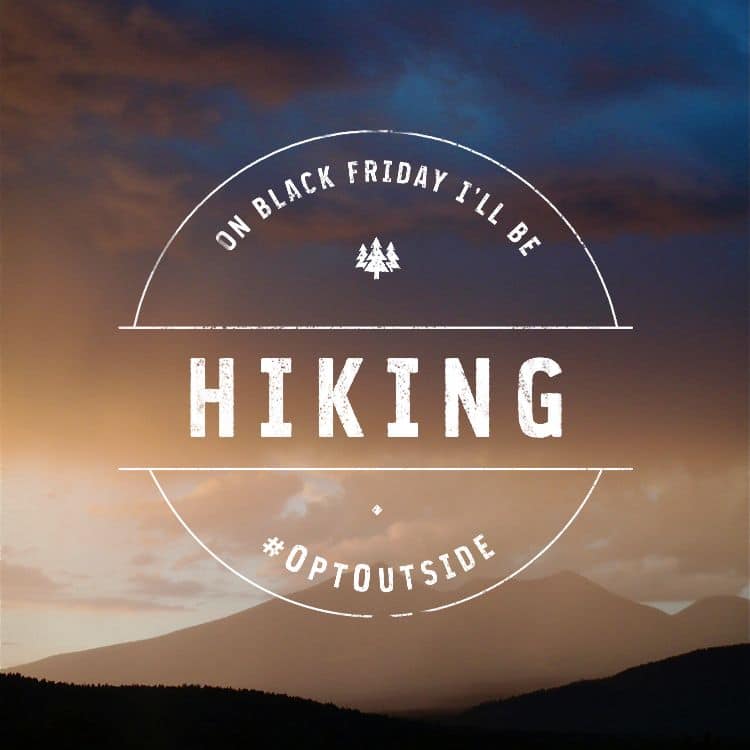
About Park Howell 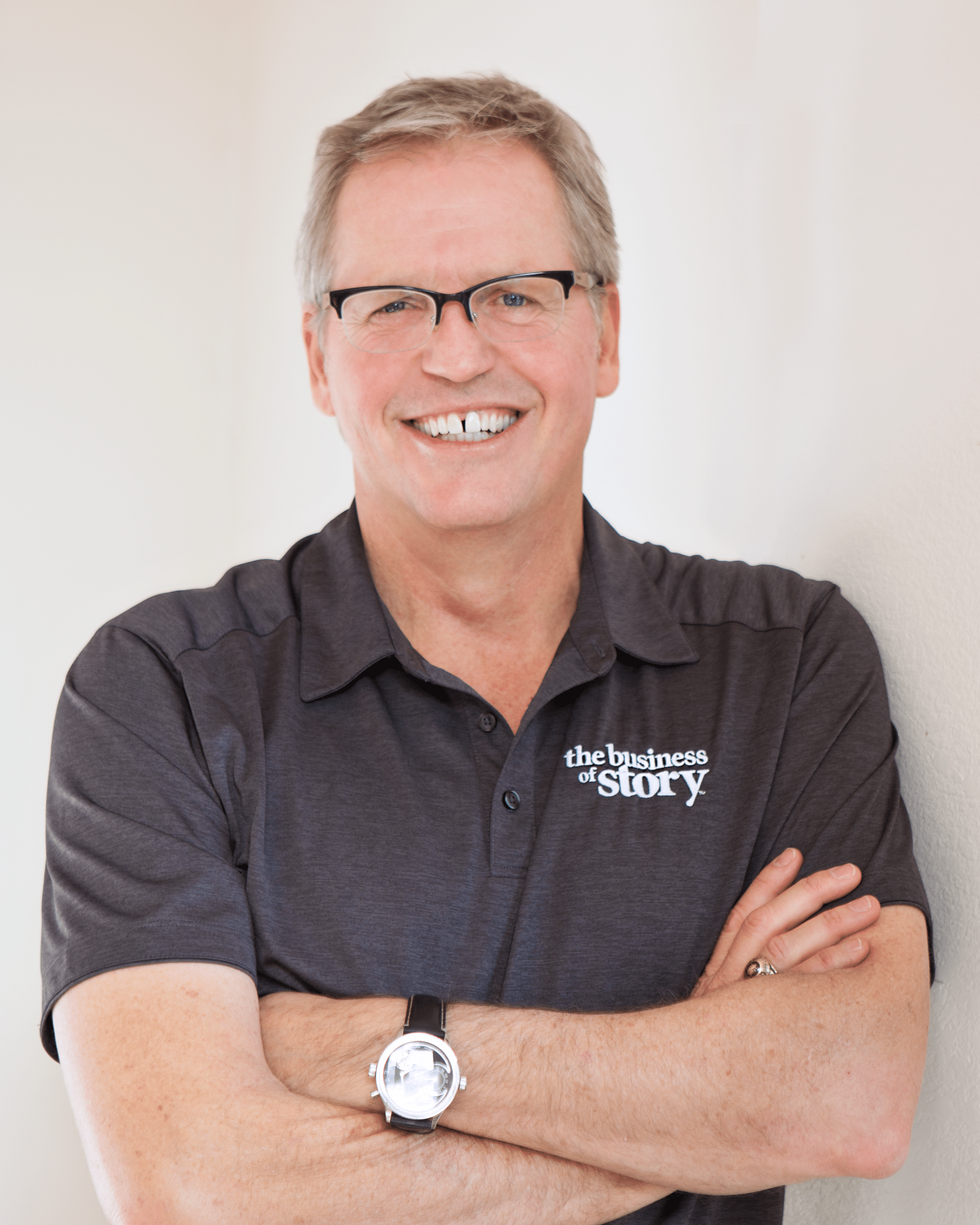
Park Howell is a trusted brand story strategist, sought-after speaker on story marketing, and is the professor of storytelling in the Executive Masters of Sustainability Leadership at Arizona State University.
He has helped international brands, including Coca Cola, Beyer Pharmaceutical, Cummins Diesel, American Express, and United States Air Force. The Business of Story podcast is a widely popular and helps brands connect with customers and achieve epic growth. Contact Park to have him speak at your company event or conference.



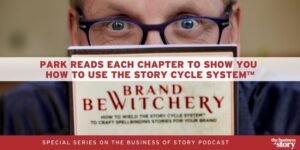
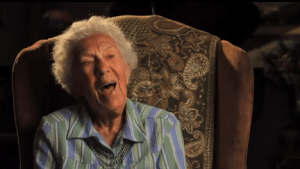
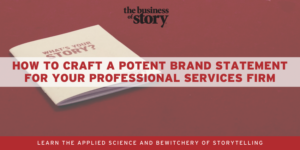






at 3:57 pm
[…] structure, I thought you’d find it interesting to experience how it is woven throughout REI’s powerful #OptOutside campaign. Note, we did not create this campaign, but I sure wish we […]
at 8:10 am
Very interesting analysis of REI and their campaign. I found it to be very insightful. Great read!
at 8:35 am
Thank you, Stephanie. I’m glad you found the article valuable. REI did an amazing job authoring this campaign, and it follows the Hero’s Journey beautifully. I doubt they intended it to, but that is the magic of a universal structure to story. Just imagine how powerful your communications can be when you follow a pragmatic and international storytelling form.
at 12:19 am
Excellent post.. love the story cycle process !
at 5:23 am
[…] did this with their #OptOutside campaign on Black […]
at 11:57 am
[…] of mind for me is REI and their brilliant #OptOutside Black Friday campaign. Now in its third year, #OptOutside is a celebration of the brand’s ethos of existing to help […]
at 7:18 am
[…] story – to get people outdoors has around for decades before it started a movement with its #OptOutside campaign. REI simply used technology to encourage people to not shop on Black Friday and instead spend that […]
at 11:09 pm
[…] “Adweek said specialists from REI’s agencies, including Venable Bell & Partners, Edelman and Spark created #OptOutside.” – The Business of Story […]
at 11:46 pm
[…] this toll by shutting its stores and other offices on Black Friday, instead paying its employees to take a day off and encouraging them and the wider community to #optoutside instead of Black Friday shopping. How […]